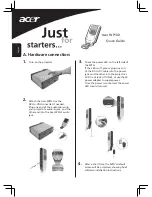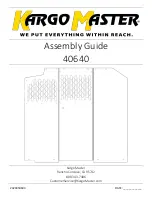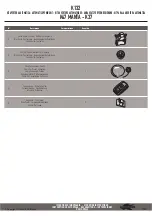
CCS240/241
Electrical connection
Hauser
15
5.2.3
Installing sensor in assembly CCA250
The Flowfit CCA250 flow assembly is designed for installing the sensor. It allows a pH and
ORP sensor to be installed, in addition to the chlorine or chlorine dioxide sensor. A needle
valve controls the flow rate in the range of 30 to 120 l/h (7.9 to 31.7 gal/h).
Please note the following during installation:
‣
The flow rate must be at least 30 l/h (7.9 gal/h). If the flow drops below this value or stops
completely, this can be detected by an inductive proximity switch and used to trigger an
alarm with locking of the dosage pumps.
‣
If the medium is returned to an overflow basin, pipe or similar, the resulting
counterpressure on the sensor must not exceed 1 bar (14.5 psi) and must remain constant.
‣
Negative pressure at the sensor e. g. caused by feedback of the medium to the suction side
of a pump, must be avoided.
‣
To avoid buildup, heavily contaminated water should also be filtered.
Additional installation instructions can be found in the Operating Instructions for the
assembly.
5.2.4
Installing sensor in other flow assemblies
When using other flow assemblies, please ensure the following:
‣
A flow velocity of at least 15 cm/s (0.49 ft/s) must be guaranteed at all times at the
membrane.
‣
The flow direction is upwards. Transported air bubbles must be removed so that they do
not collect in front of the membrane.
‣
The flow must be directed to the membrane.
5.3
Post-installation check
1. Check the membrane to ensure it is sealed and undamaged.
Replace if necessary.
2. Is the sensor installed in an assembly and not suspended from the cable?
The sensor may be installed only in an assembly or directly via the process
connection.
6
Electrical connection
L
CAUTION
Device is live
Incorrect connection may result in injury!
‣
The electrical connection may be performed only by an electrical technician.
‣
The electrical technician must have read and understood these Operating Instructions and
must follow the instructions contained therein.
‣
Prior
to commencing connection work, ensure that no voltage is present on any cable.
















































